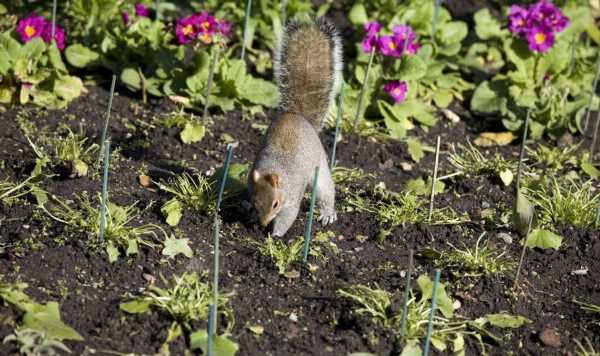Gardening expert gives tips on deterring pets and pests
We use your sign-up to provide content in ways you’ve consented to and to improve our understanding of you. This may include adverts from us and 3rd parties based on our understanding. You can unsubscribe at any time. More info
Raised beds are perfect for avoiding ground-level pests in the garden, but the crops grown inside can still fall victim to larger mammals looking for food. When freshly planted bulbs and hearty vegetables fill the soil in autumn, squirrels, birds and even slugs can become regular visitors. Gardening experts have shared the best budget-friendly barriers to deter nuisance pests from your raised planters.
Gardens need diversity to thrive with some pests even considered beneficial for growing certain plants.
Agile squirrels and birds, however, are more of a nuisance than a help and can seem impossible to deter from your crops.
Even at a height, these mammals manage to feast on the contents of raised beds, though they can be stopped according to experts at Fantastic Services.


Speaking exclusively to Express.co.uk, they said: “There are several animals that would snack on the bulbs in your garden, with the most common ones being squirrels and mice.
“The best way to protect your bulbs from animals is by creating some sort of a barrier, using plastic baskets and cups (you can use unwanted fruit baskets, or yoghurt cups), chicken wire cages, and layers of gravel.”
While any form of barrier is better than none, the experts noted that different materials have unique benefits and drawbacks.
DON’T MISS:
‘Effective deterrent’ for flies and gnats lurking around houseplants [INSIGHT]
4 methods to prevent rats entering your home – ‘get prepared’ [REVEAL]
Key signs of leather jackets and chafer grubs in your lawn [LATEST]
Chicken wire
According to Fantastic Services, chicken wire is a “quick and easy method” for plants of all sizes and is well suited to beds with a mixture of crops.
The gardening experts said: “It’s best if you have an already built raised bed to have the wire put across. If not, you can put evenly-placed stakes around a plant to create a cloche.”
The wire can be used to form a cage which should stand a few centimetres taller than the largest plant.
Simply cut the wire long enough to circle the bed, leaving some room to spare. Connect the ends to create a tube-like structure.

Prickled strips
These handy tools are a relatively new form of pest control used by gardeners.
As well as being “extremely easy to use”, Fantastic Services noted that they are pet-safe, so you don’t need to worry about them in the garden.
Prickled strips can be placed on the ground around the raised bed with the prickles facing upwards.
The mat can also be cut to different lengths and shapes for the perfect custom fit.
While prickle strips are not particularly pleasing to the eye, they offer affordable and effective pest control for full planters.

Predators
Toxic chemicals can upset the delicate balance in your soil and garden ecosystem, so it is best to stick with natural controls to protect your plants.
Encouraging predators is the most natural deterrent for nuisance pests according to Earth Easy, and it’s very simple to do.
They said: “Even if you only have two or three raised beds, you can keep them healthy by encouraging a balance of healthy microorganisms, beneficial predators and companion plants. You can also avoid harmful pesticides by trying natural treatments first.”
Marigolds, mint, sage, and lavender are all known companion plants, though simply letting your cats and dogs outdoors is often enough to deter squirrels.
Source: Read Full Article
